172. King House Museum
My Day with the King of Suffield
Suffield (Google Maps location)
June 9, 2010
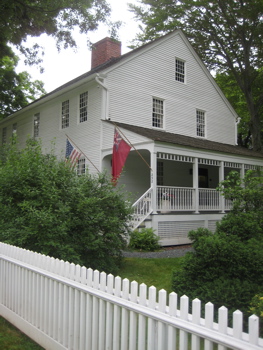 Two years prior to my King House visit, I was nearby along the beautiful route 75 in Suffield at another historic house museum, the Phelps-Hatheway Museum (my visit here), and I think it was only then that I learned of the King House Museum’s existence. Since I was at a “distinguished” Connecticut Landmark property, I got it in my stupid head that the li’l ol’ King House down the street was just another boring town history museum. And I subsequently didn’t think about it too much.
Two years prior to my King House visit, I was nearby along the beautiful route 75 in Suffield at another historic house museum, the Phelps-Hatheway Museum (my visit here), and I think it was only then that I learned of the King House Museum’s existence. Since I was at a “distinguished” Connecticut Landmark property, I got it in my stupid head that the li’l ol’ King House down the street was just another boring town history museum. And I subsequently didn’t think about it too much.
So it was, almost two years later and settled into a job in Windsor, that I began poking around for stuff to see and do for CTMQ during lunch or after work. I can get up to the southern bit of Suffield in about 10 minutes so I decided it was time to visit the King House – boring as I thought it might be.
When am I going to learn? Spoiler alert: The King House is not boring and not only that, you may have the singular pleasure of meeting the true “king” of Suffield, Lester Smith. Mr. Smith is, from what I gather, pretty much THE guy when it comes to historical preservation around town. He’s sharp, witty and immediately “got” what I’m trying to do where with this website. (I was subsequently asked to give a CTMQ presentation at a Suffield Historical Society meeting, which 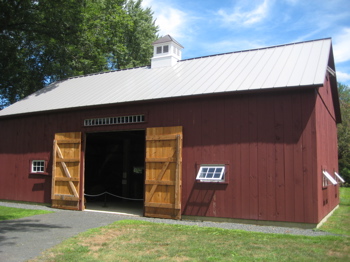 endeared me even more to Mr. Smith and the organization.)
endeared me even more to Mr. Smith and the organization.)
I arrived and found myself locked out, despite the Open flag flying proud. I rang the doorbell and no one answered. “A-ha!” I thought to myself, “ I knew this place was lame.” But I also knew there were people inside, so I walked around to a back door and knocked loudly. A woman answered the door and apologized for not hearing the bell earlier and welcomed me in.
This was Nancy Noble (whom, I suspect, may be the person truly responsible for my speaking engagement, but that’s neither here nor there). I got the usual quizzical look as to why I was there and gave my usual, “I like to go to museums” answer. Later, while upstairs and divulging that I knew way too much about random Connecticut museums, I came clean to Nancy. Yes, as it turns out, I’m that guy. (Coincidentally, it was at the Phelp-Hatheway House where I was first recognized as that guy.)
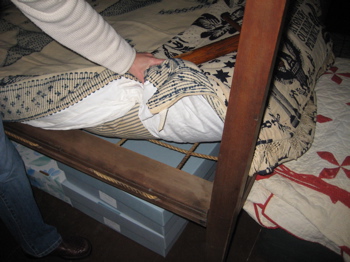 Let’s get some background info on the house from the Suffield Historical Society website:
Let’s get some background info on the house from the Suffield Historical Society website:
It was in beautiful, historic Suffield that Dr. Alexander King built his home in 1764 on what has become one of New England’s most admired Main Streets. Dr. King was a prominent leader of the local community, as well as a farmer and physician. His fine Georgian Colonial house still stands as an excellent example of the standard center-chimney structure of its day.
King’s home, since 1960 the museum of the Suffield Historical Society, is filled with a great collection of early Connecticut Valley furniture. In addition, the museum’s galleries display many interesting exhibits of local history. A barn at the museum houses a number of early carriages and sleighs and an expanding collection of the larger pieces used locally in growing and processing tobacco.
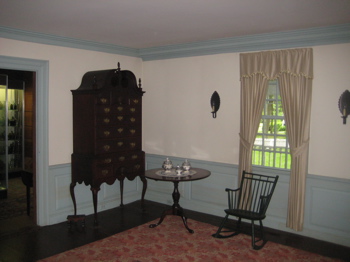 Cool. So now you know, the house up the road is owned and operated by the much larger Connecticut Landmarks organization whereas this house is the town’s historical society joint. I interrupted their spiel to make sure you’re prepared for the next paragraph. Ready? Good.
Cool. So now you know, the house up the road is owned and operated by the much larger Connecticut Landmarks organization whereas this house is the town’s historical society joint. I interrupted their spiel to make sure you’re prepared for the next paragraph. Ready? Good.
Especially significant is the Suffield cigar tobacco exhibit, as the town was for many decades one of the major sources of Connecticut Valley tobacco, as well as the location of the first cigar factory in the United States. Other exhibits include a large gathering of early flasks and bottles, an unusual set of tenth wedding anniversary tinware, and a large collection of Bennington pottery, along with many other examples of local memorabilia.
Whoa! Two things: One, so this place ISN’T just another historic house museum, but also contains a whole room full of tobacconalia! And two, that they can just drop in a factoid about a US First like that, without warning, blows me away.
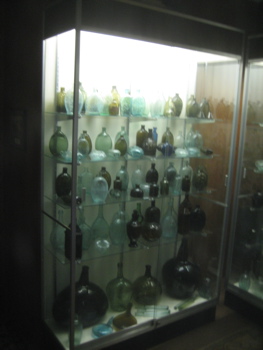 I must admit, of all the great stuff in the house it was that tidbit that left me giddy after my visit. In fact, I think I sought out the site only a day or two later up in the hinterlands of Suffield – check out my visit to the first cigar factory in the US here.
I must admit, of all the great stuff in the house it was that tidbit that left me giddy after my visit. In fact, I think I sought out the site only a day or two later up in the hinterlands of Suffield – check out my visit to the first cigar factory in the US here.
Okay, back to the house museum. I must hang my head in shame at this point and note that I’m writing this over 16 months after my visit so my details are worse than fuzzy. No matter, that should give you impetus to visit yourselves someday.
Actually, the King House has printed up an incredibly nice booklet all about the house, which I’ll be using liberally to expound upon my visit. I’m sure they won’t mind.
The book starts out with a fine short history of Suffield and how it came to be. Did you know it was originally chartered as “Southfield” and was sort of part of – gasp – Massachusetts? This should come as no surprise to any CTMQ  reader, as you’re all familiar with the travesty of the Southwick Jog (CTMQ’s begrudging visit here). The booklet notes that 75 years later Connecticut took possession of Southfield/Suffield, but didn’t agree upon the border until 1803. And that’s actually not really true, AS THE BATTLE RAGES TODAY.
reader, as you’re all familiar with the travesty of the Southwick Jog (CTMQ’s begrudging visit here). The booklet notes that 75 years later Connecticut took possession of Southfield/Suffield, but didn’t agree upon the border until 1803. And that’s actually not really true, AS THE BATTLE RAGES TODAY.
Ahem.
In 1678, 18 acres went to James King from England. I like his resume: a cooper by trade, but also “a tything man, surveyor of highways, clerk, searcher of records and sealer of weights, gauger of casks, etc.” He and his wife had a some kids including a James, Jr. Land was transferred here and there and houses and mills were built. James, Jr. had 8 kids. They left their house to the 6th one, Joseph upon their death. Joseph and his wife had more kids, including Alexander who married some woman named Experience in 1765. (Yes, I wrote all that just to get to write her name.)
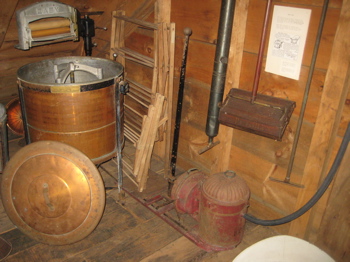 The genealogy lesson continues for a bit all the way up to the early 20th century. But it’s Alexander – that’s Dr. Alexander King to you and me – that we care most about. This guy was pretty much Mr. Everything: Graduated from Yale, was a doctor and a lawyer and a politician. He was Suffield’s representative to Connecticut and voted “Nay” in ratifying the constitution. Fancy that.
The genealogy lesson continues for a bit all the way up to the early 20th century. But it’s Alexander – that’s Dr. Alexander King to you and me – that we care most about. This guy was pretty much Mr. Everything: Graduated from Yale, was a doctor and a lawyer and a politician. He was Suffield’s representative to Connecticut and voted “Nay” in ratifying the constitution. Fancy that.
He was town clerk and a selectman and healed people and went to church. He created Volume 1 of a town records book recording all the births, deaths and marriages. He also wrote a rather treasonous resolution to the Stamp Act which was super gutsy at the time, so I guess that cancels out his opposition to the Constitution thing.
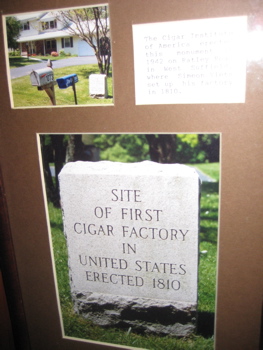 Oh, and he ran a large farm. And was the first person in Suffield to make saltpeter (gunpowder.) I love this guy. But enough about him, let’s check out his old house.
Oh, and he ran a large farm. And was the first person in Suffield to make saltpeter (gunpowder.) I love this guy. But enough about him, let’s check out his old house.
I entered through the porch, which is original to the house. Apparently this is a very rare thing in 18th century houses. The house is very solidly built, and even survived a pretty nasty fire in 1983. (It also suffered a blow from a giant sugar maple on June 9, 2011 – mere days after a serious tornado destroyed a huge swath of Massachusetts a few miles to the north. The tree destroyed the porch railing and smashed up the chimney and penetrated the roof. Two bottles were broken. Phew.)
Anyway, back in 1910 the estimable Mr. Samuel Spencer bought the King House. He seems to have done it for selfish reasons initially, but then spent his later years restoring it to its glory. He even installed a huge period front door and his wife decorated the place with a bunch of antique furniture. Spencer also did a bunch of repairs to the windows and fireplaces and such. In 1960, he donated the house to the town and the historical society.
The house is a typical and well-executed example of an 18th-century Connecticut house with its central chimney. The room back by the rear porch entryway was probably Dr. King’s office. Check this out: in it is a Franklin stove used by none other than David Trumbull down in Lebanon. There is also a fine display of some guy named Dr. Matthew Newton’s 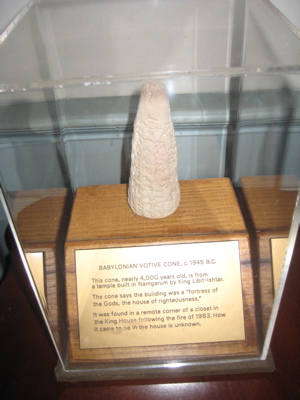 surgical instruments from the Civil War. There are also some antique guns here and stuff as well as an impressive collection of bottles and flasks.
surgical instruments from the Civil War. There are also some antique guns here and stuff as well as an impressive collection of bottles and flasks.
And there’s this, to the right:
That there’s a 4,000 year old Babylonian votive cone from a temple built in Namgarum by King Libit-Ishtar. Another King! I should have grabbed lunch from Burger King after this visit, just to round out my day. According to the sign, it was found in a remote corner of the house after the fire and no one knows why it was there.
Through the kitchen and into the dining room which is outfitted with a bunch of great examples of early Suffield furniture, notably a bunch of Hepplewhite pieces from right around 1800. I’m not sure my IKEA stuff will be around in 200+ years, but one never knows. This place even has an authentic Eliphalet King (no relation, I don’t think) corner cabinet, which I understand are pretty rare and worth a lot.
There hangs a cool painting of old timey Suffield in the dining room and I vaguely recall Ms. Noble telling me that while the artist is unknown, he was a criminal forger of some sort and was commissioned to make a copy of the original. Trust me, go to the King House to hear the whole story; I remember being quite taken by it.
The staircase upstairs is beautiful and the bedrooms up there contain all the usual stuff bedrooms in these old houses contain. But there are also some unique items like some more rare and striking period furniture as well as Eliphalet King’s military commissions, signed by none other than Governor Jonathan Trumbull and the other by one John Hancock in 1776.
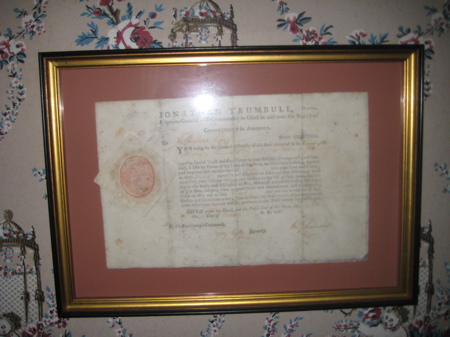
John Hancock’s John Hancock is here, lower right
The kids’ room held a rather impressive collection of antique toys. And believe it or not, the old dolls were not as creepy as they usually are – but the creepy mannequin in the dining room more than made up for that.
In another upstairs room the society shows off its impressive collection of samplers from the early 1800’s. I’m not much into these things, but their importance in US history cannot be denied and some of them are super impressive. Also housed here during my visit was a very large antique button collection.
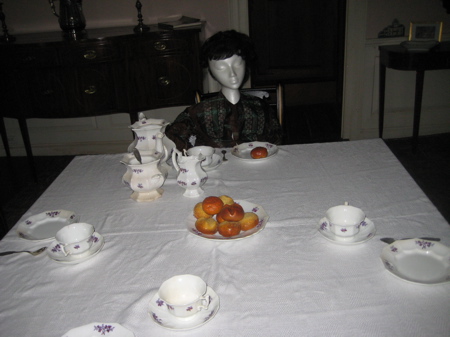
Alien Mannequin
It was here, over a glass display case of old buttons where I asked if I could take a picture. That question was the spark that let the cat out of the bag as to why I was at the museum and why I felt the need to take pictures of stuff that any normal dude isn’t all that interested in. And, thankfully, it was this admission that allowed Nancy and I to become friends. You see how that works?
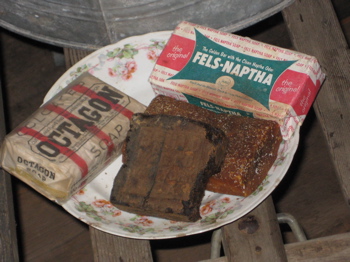 Anyway, Nancy and I went up to the attic where some evidence of the 1983 fire could be seen, as well as more pedestrian collections of cleaning implements. Don’t ask me why, but the ancient bar of Fels Naptha, antique “washing machine,” and old vacuum cleaner were of interest to me. Nancy and I somehow got to speaking about “modern historic houses” like the Glass House (CTMQ Visit here) and I was sort of surprised to learn that she was very interested in their preservation as much as she was for places like the King House. I suspect she is a rarity in the Connecticut historic house museum docent world.
Anyway, Nancy and I went up to the attic where some evidence of the 1983 fire could be seen, as well as more pedestrian collections of cleaning implements. Don’t ask me why, but the ancient bar of Fels Naptha, antique “washing machine,” and old vacuum cleaner were of interest to me. Nancy and I somehow got to speaking about “modern historic houses” like the Glass House (CTMQ Visit here) and I was sort of surprised to learn that she was very interested in their preservation as much as she was for places like the King House. I suspect she is a rarity in the Connecticut historic house museum docent world.
Back downstairs and back through the kitchen to the shed room, where the society houses some of its permanent collection as well as intermittent seasonal stuff. The most interesting thing here is a crazy collection of tinware – from the 10th 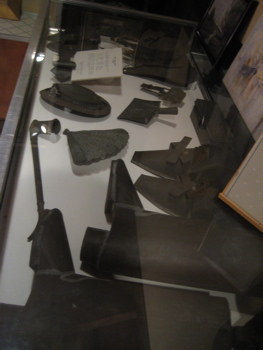 anniversary of the Loomis’s from 1869, a time when people gave anniversary gifts according to those traditional materials you’ve read about. Some of the items are just silly, like the tin top hat and the tin shoes. Remember when Tracy Jordan wore gold shoes on 30 Rock? Well, this is real!
anniversary of the Loomis’s from 1869, a time when people gave anniversary gifts according to those traditional materials you’ve read about. Some of the items are just silly, like the tin top hat and the tin shoes. Remember when Tracy Jordan wore gold shoes on 30 Rock? Well, this is real!
In the loft off the shed room is the huge tobacco collection. As mentioned, Suffield is one of Connecticut’s tobacco towns. I can think of tobacco museums and/or parts of museums related to the industry in Windsor, South Windsor, East Hartford, Granby and I’m sure there is a display in East Windsor as well – but I haven’t been there yet.
I really enjoyed the tobacco exhibit not only for all the cool and unique stuff there, but also because it’s where I was able to spend some time with Lester Smith. He’s AWESOME. He’s one of the people I’ve met from all around the state that make everything I do here on CTMQ worth every mile I drive and every dollar I spend. Just a joy to be around.
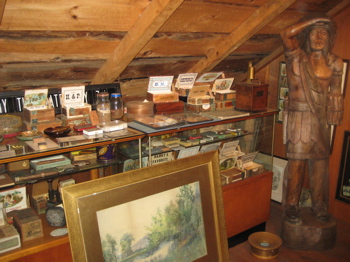 He was adamant that I check out the barn across the parking lot, but I just didn’t have the time. I promised to return to see it at some point. Sure, it took me over a year to do so, but I finally did one day in the summer of 2011.
He was adamant that I check out the barn across the parking lot, but I just didn’t have the time. I promised to return to see it at some point. Sure, it took me over a year to do so, but I finally did one day in the summer of 2011.
Funny enough, the day I went was a harvest day for the tobacco field next to my office. I like to watch the migrant workers hand pick the leaves and am fascinated with how they set the leaves for transport and ultimately their drying. However, I do not like getting caught behind one of the tobacco tractors on the roads here in Windsor, as happened to me on my way up to the barn. I finally arrived and parked and noticed it was open so I wandered in to see what treasures lurked. I know the barn is a work in progress, but even so, there is a nice collection of carriages and old tobacco processing equipment.
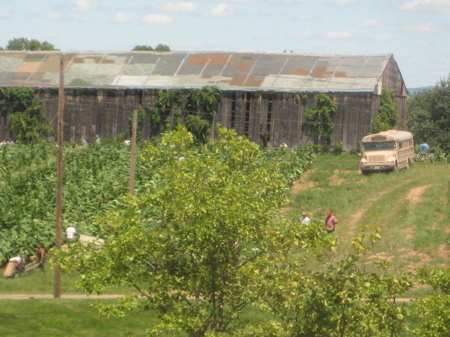
Picking tobacco next to my office
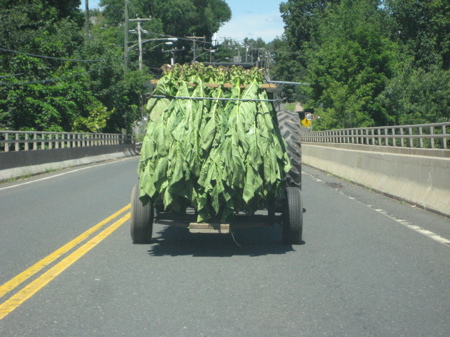
Stuck behind the goods
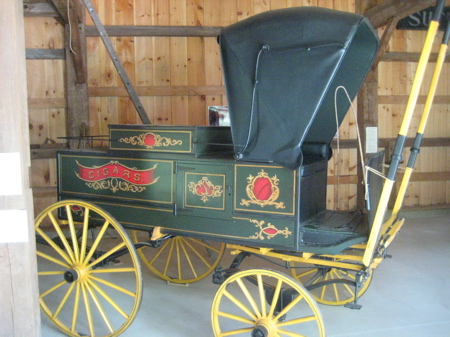
The barn was built circa 1840 in Bailieboro, Ontario and was reassembled here by the Suffield Historical Society.
…………………………………………………….
Cost: Free! (donation suggested)
Hours: May-Sept, Wed & Sat 1-4
Food & Drink? Tosca up the road seems Kingly
Children? If they’re used to this sort of thing
You’ll like it if: You like this stuff, but yearn for more
You won’t like it if: You volunteer at another house museum and get jealous easily
Freebies: none
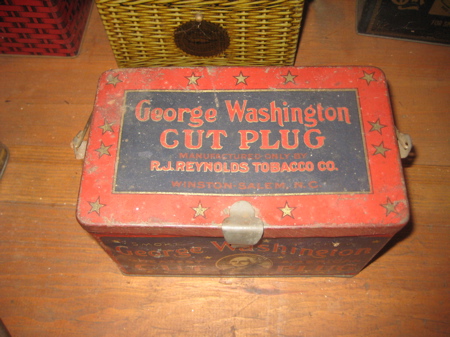
For the Curious:






Leave a Comment